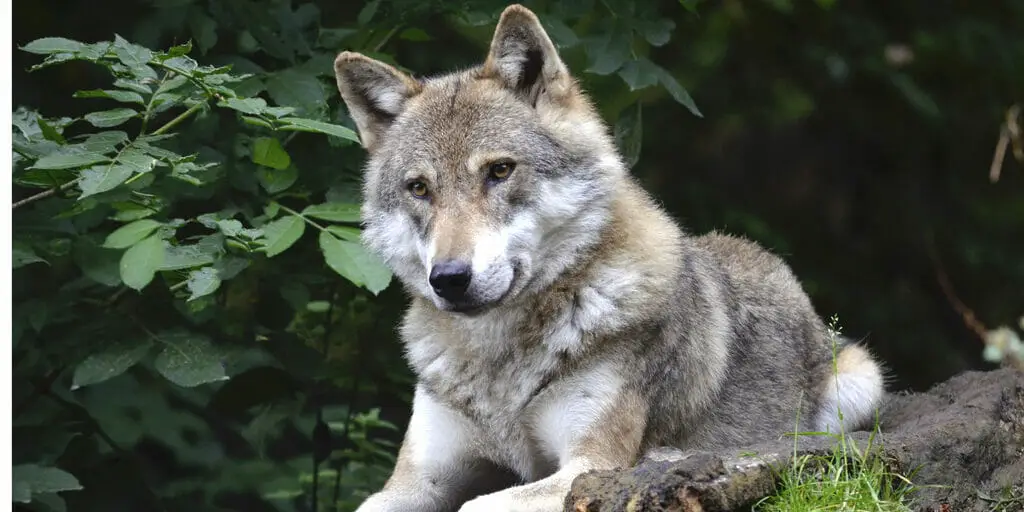How to Save the Wolves – (3 Best Ways to Save the Wolves)
Like other top predators, wolves are an important part of our ecological system that plays an essential role in maintaining the balance of the food chain and biodiversity.
Yet, due to violent human behavior, and habitat loss, these predators faced a looming threat of extinction.

And we can rescue this crucial species by fulfilling our duties as responsible citizens. But how can we save the wolves from the brink of extinction? In this blog, we have explained how wolves survived in America and the three best ways to save the species of wolves.
America’s Gray Wolves Get Another Chance of Recovery
After many legal battles, this animal species finally got another chance to recover its population from the point of extinction.
The U.S. Fish and Wildlife Service announced its plans to restore federal protections for gray wolves, reversing the Trump-era decision that stripped the protection act and left this species helpless.
By reversing the decision, gray wolves in the lower 48 states again come under the legal protections they desperately need to thrive.
This decision marks a significant step toward the long-term recovery of gray wolf populations, decimated by human activity and habitat loss.
By taking a proactive approach to conservation and restoring this species, we can ensure that America’s gray wolves have a real chance of recovery.
Wyoming’s wolf populations
Wyoming’s wolf populations have been the subject of much debate and controversy over the past few decades. In 2011, wolves were removed from Wyoming’s federal endangered species list and placed under state management.
Nevertheless, Wyoming allowed unregulated hunting in 2021 within 85% of the state, including regions that border Yellowstone National Park and Grand Teton National Park.
Today, the state’s wolf population have 328 wolves, with the majority living in the northwestern part.
While some view wolves as a vital component of Wyoming’s ecosystem, others believe they are dangerous for livestock and human safety.
The Wolf’s Eventual Delisting
After the announcement of the Biden administration’s orders to remove the endangered species act protections from every gray wolf in the lower 48 states, a wild campaign started to protect wolves in 2019.
The rallies and community meetings held across the country played an important role in this campaign. Moreover, around 1.8 million statements were submitted against Trump’s administration orders.

In 2020, the service decided to strip federal protection from all the wolves of the U.S., except the small southwest population that protected the gray wolves under the protection act.
In early January 2021, a wolf “delisting” rule was implemented, which prompted the community and its allies to take legal action against delisting. This legal action claimed that delisting wolves is unlawful because wolf populations have not yet fully recovered.
Why are more initiatives still necessary to Save the Wolves?
The gray wolf, which was once on the brink of extinction, has made an impressive comeback in recent decades.
After being nearly wiped out from much of the contiguous United States due to habitat loss and aggressive hunting. The gray wolf was listed as an endangered species in 1974.
This led to the implementation of protective measures, including reintroduction programs and strict hunting regulations. Today, gray wolves can be found in several states, including Michigan, Wisconsin, Montana, Idaho, and Minnesota.
While the recovery of the gray wolf undoubtedly needs a lot of effort. Despite their protected status, wolves are yet facing threats such as poaching, illegal hunting, and habitat loss.
Additionally, some states have implemented policies that allow for hunting wolves under certain circumstances. That includes threat to livestock or human safety.
Furthermore, efforts to protect and conserve wolf populations must continue, and public awareness and education are crucial components of these efforts.
It is important to understand the role that wolves play in ecosystems and the potential consequences of their continued decline.
What can you do to help in Protecting the Wolves population?
Your work to save wolves nationwide is more important than ever. As apex predators, wolves play a critical role in maintaining a healthy and balanced ecosystem.
However, human activities such as hunting, trapping, and habitat destruction have led to declining wolf populations across the country.
Many organizations are against such wolves killing activities and working to protect and conserve them.
This includes running campaigns to favor wolves, support for stronger wildlife protection laws, wolf sanctuaries, and rehabilitation centers.
Saving the Wolves in their Natural Habitat.
Saving the wolves in their natural habitat is essential to maintaining a healthy and diverse ecosystem. Wolves are apex predators, and their presence in the wild helps regulate populations of other species, such as deer and elk.
The wolves play an important role in keeping the population of elks and deer under control. But habitat destruction and fragmentation have led to a decline in wolf populations nationwide. To save the wolves, we must prioritize their natural habitat.
Northern Rockies Region
The Northern Rockies region of North America is home to some of the most essential wild animals in the world, including the gray wolf. Unfortunately, this creature faces numerous threats, including illegal hunting and climate change.
To protect the wolves in the Northern Rockies Region, it is important to take immediate action to protect them in their natural habitat, promote sustainable land use practices, and reduce human-wolf conflicts.
This can include measures such as implementing conservation easements on critical wolf habitats and creating protected areas and corridors that connect fragmented habitats.
West and Midwest
The populations of wolves in the West and Midwest have been threatened by habitat loss, hunting, and other urban development.
To save this keystone species located in the West and Midwest, conservation efforts have been focused on protecting their habitats, managing wolf populations, and educating the public on the importance of wolves in the ecosystem.
One key strategy for saving wolves is establishing protected areas, such as national parks and forests, where wolves can roam freely and thrive in their natural habitats.
Additionally, efforts to reduce conflicts between wolves and livestock have included using non-lethal deterrents, such as fencing and guard animals, and compensation programs for ranchers who experience losses due to wolf predation.
Great Lakes region
The wolves of the Great Lakes region are also facing serious threats of extinction due to a range of human activities. However, there are steps we can take to save them.
One of the most important things we can do is to support efforts to protect and restore their habitat, involving actions like preserving large areas of jungles and ensuring that crucial prey species like deer and elk are not overhunted.
In addition, we can work to reduce conflicts between wolves and humans by promoting non-lethal ways of managing wolf populations.
Increasing Funds and Resources for Wildlife Services
Gray wolves are a keystone species, crucial in maintaining the ecological balance. However, their populations have been destroyed due to habitat loss, hunting, and other factors.
Increasing funding and resources for wildlife services that protect the gray wolves is essential to ensure their survival.
One way to achieve this is through lobbying for increased government funding and support for wildlife conservation efforts. Another approach is encouraging donations and promoting fundraising campaigns.
Additionally, educating the public about the importance of gray wolves and their role in the ecosystem. Moreover, the increased support for wildlife funding for the protection of the wolves.
By taking these actions, we can help ensure the survival and well-being of gray wolves and preserve the natural balance of our environment.
Wolf recovery plans to Save the Wolves.
Since wolf recovery plans were first written in the 1980s, people have learned much more about wolves’ behavior, ecology, and needs. Their recovery also has to be about more than a population number.
Wolf recovery is also about shifting our relationship with nature to reciprocity rather than competition and conflict. A major factor of conflict between wolves and livestock is the anti-wolf sentiment, resulting in the wolf’s brutal killing.
This is why NRDC has been working to advance healthy coexistence practices by fueling anti-wolf killing and state management policies.
Wolf recovery plans have been implemented in several states, including Montana, Wyoming, and Idaho, where the wolf population has recovered significantly.
Despite this progress, many calls for delisting the wolf from the endangered species act protections, claiming conflicts with livestock.
Conclusion
For a healthy ecosystem saving the wolves is necessary, as these animals are the top predators. And by honestly fulfilling our part in protecting them, we can ensure that they won’t reach near extinction again.
As previous premature decisions of Biden’s administration left the American wolves in danger and helpless. But due to the on-time response of people, this species has been saved from extinction.
However, the journey of recovering the wolves is still incomplete, but by using the best ways to save them and giving them legal rights, we can protect them from vanishing from our environment. Check out the video given below for more details.
Frequently Asked Questions.
Why should we save the wolves?
Wolves play a crucial role in keeping a healthy ecosystem.
What would happen if there were no wolves?
If all wolves die, the food chain and our ecosystem will be destroyed.
How can we help the Arctic wolf?
The best way to protect Arctic wolves is to prevent global warming.
How can we save wolves?
By raising voices in favor of wolves, and relisting wolves on the US endangered species act.
- What Should I Do If A Koala Bites Me? Safety Guide - 2024-05-30
- Are Kangaroos Born Without Hind Legs? A Fascinating Journey - 2024-05-30
- Animals That Look Like Squirrels - 2024-05-30









